
Microsoft Flight Simulator is a series of flight simulator programs for MS-DOS, Classic Mac OS and Microsoft Windows operating systems. It was an early product in the Microsoft application portfolio and differed significantly from Microsoft's other software, which was largely business-oriented. As of November 2022, Microsoft Flight Simulator is the longest-running software product line for Microsoft, predating Windows by three years. Microsoft Flight Simulator is one of the longest-running PC video game series of all time.
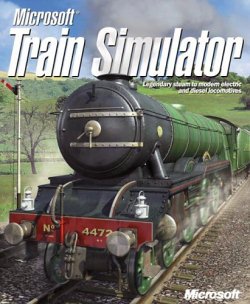
Microsoft Train Simulator is a 2001 train simulator game developed by UK-based Kuju Entertainment and published by Xbox Game Studios for Microsoft Windows. It was released on June 18, 2001.

Flight Unlimited II is a 1997 flight simulator video game developed by Looking Glass Studios and published by Eidos Interactive. The player controls one of five planes in the airspace of the San Francisco Bay Area, which is shared with up to 600 artificially intelligent aircraft directed by real-time air traffic control. The game eschews the aerobatics focus of its predecessor, Flight Unlimited, in favor of general civilian aviation. As such, new physics code and an engine were developed, the former because the programmer of Flight Unlimited's computational fluid dynamics system, Seamus Blackley, had left the company.

Grand Prix 3 is a computer racing simulator by MicroProse, released in 2000 by Hasbro Interactive.

Stronghold is a historical real-time strategy video game developed by Firefly Studios and published in 2001 by Gathering of Developers for Microsoft Windows and Mac OS X. The game focuses primarily on conquest and expansion through military pursuits but also has prominent economic and infrastructure development elements. There is both an economic and a military campaign to be played and both are discussed in the game manual. In the English version, the game takes place in Medieval Britain around the year 1066; however, since there is not always a time limit, scenarios can continue hundreds of years beyond that date.
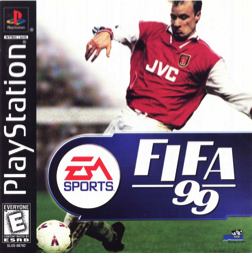
FIFA 99 is a football simulation video game developed by EA Canada and published by Electronic Arts under the EA Sports label. It is the sixth game in the FIFA series and was released in 1998 for Microsoft Windows, PlayStation and Nintendo 64.

Formula 1 97 is a racing video game developed by Bizarre Creations and published by Psygnosis for PlayStation and Microsoft Windows. It is the sequel to the 1996 video game Formula 1 and was based on the 1997 Formula One World Championship. This was the last Formula One game to be made by the Bizarre Creations team, who moved on to create the successful Metropolis Street Racer for the Dreamcast and Project Gotham Racing for the Xbox.
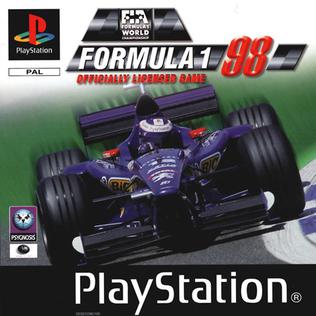
Formula 1 98 is a racing video game developed by Visual Science and published by Psygnosis exclusively for PlayStation. It is the sequel to the 1997 video game Formula 1 97 and was based on the 1998 Formula One World Championship.

Grand Prix 2, released in North America as "Grand Prix II", is a racing simulator released by MicroProse in 1996. It is a sequel to Formula One Grand Prix. It was made under an official FIA license that featured the Formula One 1994 season, with all of the circuits, teams, drivers and cars. The cars were painted with liveries reflecting the races that did not allow tobacco and alcohol sponsors.
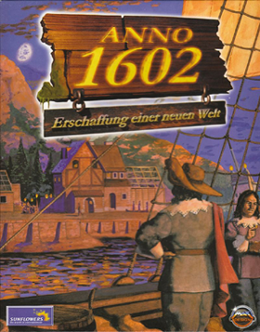
Anno 1602: Creation of a New World, entitled 1602 A.D. in North America, is a 1998 construction and management video game developed by Max Design and published by Sunflowers Interactive. Set in the early modern period, it requires the player to build colonies on small islands and manage resources, exploration, diplomacy and trade. The game design is noteworthy for its attempt to implement a 'progressive' artificial intelligence, meaning that the pace of the game changes in response to how quickly players act.
Microsoft Flight Simulator began as a set of articles on computer graphics, written by Bruce Artwick throughout 1976, about flight simulation using 3-D graphics. When the editor of the magazine told Artwick that subscribers were interested in purchasing such a program, Artwick founded Sublogic Corporation to commercialize his ideas. At first the new company sold flight simulators through mail order, but that changed in January 1979 with the release of Flight Simulator (FS) for the Apple II. They soon followed this up with versions for other systems and from there it evolved into a long-running series of computer flight simulators.

Microsoft Flight Simulator X is a 2006 flight simulation video game originally developed by Aces Game Studio and published by Microsoft Game Studios for Microsoft Windows. It is the sequel to Microsoft Flight Simulator 2004 and the tenth installment of the Microsoft Flight Simulator series, which was first released in 1982. It is built on an upgraded graphics rendering engine, showcasing DirectX 10 features in Windows Vista and was marketed by Microsoft as the most important technological milestone in the series at the time. FSX is the first version in the series to be released on DVD media.
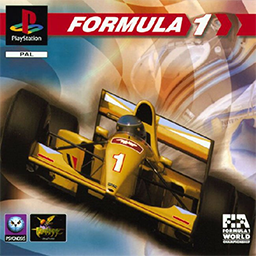
Formula 1 is a racing video game developed by Bizarre Creations and published by Psygnosis for PlayStation and Microsoft Windows. It is the first installment in Sony's Formula One series.

Stronghold: Crusader is the successor to Firefly Studios's 2001 real-time strategy video game Stronghold. Crusader has much in common with the original Stronghold, but differs from its predecessor in the fact that the game is no longer set in England, instead being set in the Middle East during the Crusades. Another prominent addition not found in its predecessor is a skirmish mode in single-player, allowing customized battles with AI opponents instead of the linear campaign. The game was also released as Stronghold Warchest. This version was a compendium of Stronghold and an enhanced version of Stronghold: Crusader, containing additional characters and an additional Crusader Trail.

Microsoft Flight Simulator 2000, abbreviated commonly as FS2000, is a flight simulator video game. It was released in late 1999 for Microsoft Windows. A Professional Edition was released alongside the standard edition. It added two airplanes, six cities, and a flight model/instrument panel editor.

F1 Racing Simulation is a racing simulation game, developed for Microsoft Windows by Ubisoft in 1997. The game is based on the 1996 Formula One World Championship, and is the first of the Racing Simulation games made by Ubisoft, being the predecessor to Racing Simulation 2, which was released in 1998.
On the Ball is a football management game series from the German developers Ascaron, former name Ascon. The premiere title in the series is On the Ball. The player is managing a football club in the English League. The original game was very popular in Germany, so the developer Ascaron created several sequels: "On the Ball 2", "On the Ball 3", and "On the Ball Action". Doppelpass was a bundle that included On the Ball and the self-running add-on Anstoss World Cup Edition. The English version has a minor fan base.

Sudden Strike is a real-time tactics computer game set in World War II and the first game in the Sudden Strike series. The game was developed by Fireglow based in Russia and published by CDV software of Germany. The player selects a faction and gains control of many varied units such as infantry, tanks and artillery. The games focus primarily on tactics, eschewing traditional real-time strategy resource gathering and base development.
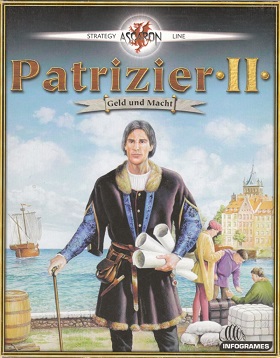
Patrician II: Quest for Power, entitled Patrizier 2: Geld und Macht in Germany, is the second video game from developer Ascaron in their Patrician series. The sequel to The Patrician, it is a game simulating trading, piracy, politics, and economy. An expansion pack, Patrizier 2: Aufschwung der Hanse, was released in Germany in 2001. A compilation release containing the main game and the expansion was released as Patrizier 2: Gold Edition in Germany in 2002 and as Patrician III: Rise of the Hanse internationally in 2003. A sequel, Patrician IV, was released in 2010.

Who Wants to Be a Millionaire is a 1999 quiz/party video game originally developed by Jellyvision and published by Disney Interactive, based on the television franchise of the same name. The game was originally based on the American version of the show. It tasks the player with answering quiz questions in a limited time frame.


















